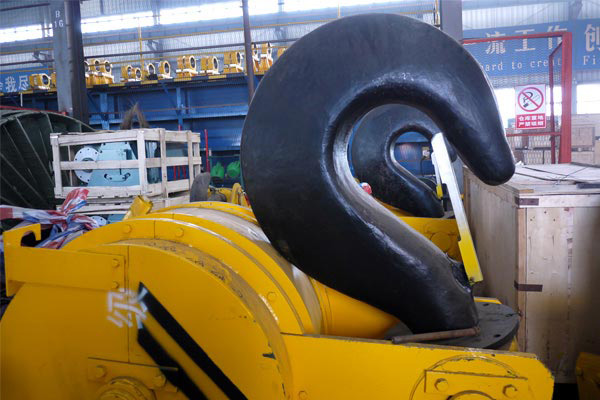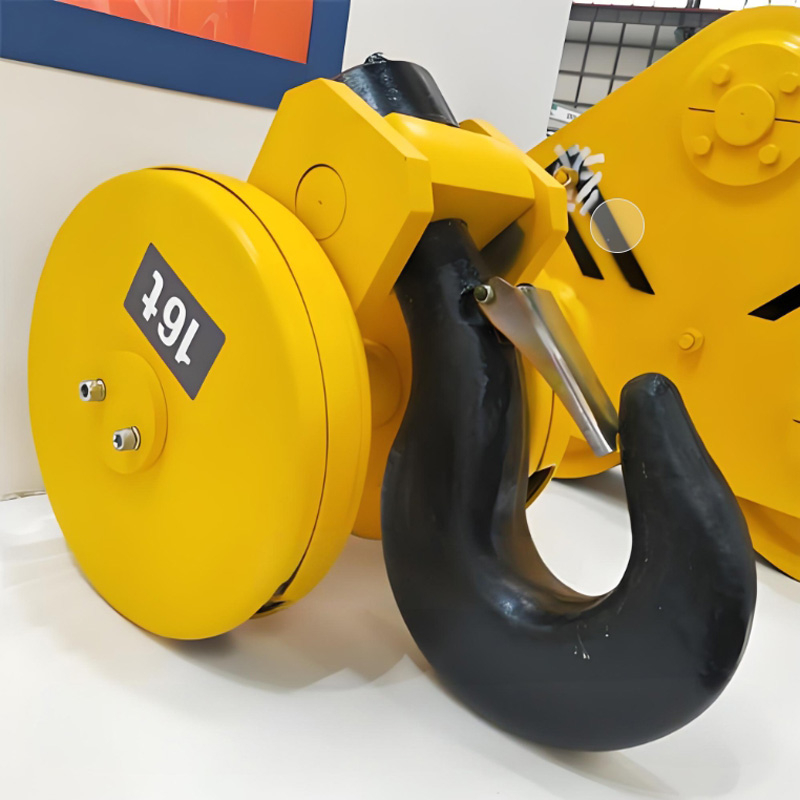Що стосується підйому важких навантажень у промислові та будівельні програми, Безпека крана гачка є першорядною. Одним із ключових параметрів для оцінки безпеки гачка крана є розрахунок коефіцієнта безпеки гачка крана. Розуміння цієї концепції допомагає забезпечити безпечну роботу, запобігти збою обладнання, і захистити персонал. У цьому блозі, Ми вивчимо, що таке коефіцієнт безпеки, Як його обчислити, і які стандарти застосовуються.

Коефіцієнт безпеки, також відомий як фактор безпеки (Фос), є співвідношенням між максимальним навантаженням a гачок може теоретично впоратися (Порушення навантаження) і навантаження, яке воно фактично очікується перевозити під час роботи (робоче навантаження). Він припадає на невизначеності, такі як дефекти матеріалу, втома, Несподівані напруги, і неправильне використання.
Розрахунок коефіцієнта безпеки гачка крана, як правило, представлений формулою:
Кінцеве навантаження (Уль): Максимальне навантаження, яким може обробляти гачок крана перед відмовою.
Обмеження робочого навантаження (Wll): Максимальне безпечне робоче навантаження, рекомендоване виробником.
Приклад розрахунку:
Якщо гачок крана має навантаження 50,000 кг і межа робочого навантаження 10,000 кг:
SF = 50,000 / 10,000 = 5
Це означає, що коефіцієнт безпеки є 5, що є загальною цінністю для підйомного обладнання.

Необхідний коефіцієнт безпеки може змінюватися залежно від правил, галузеві стандарти, та застосування. Деякі загальні вказівки включають:
OSHA (Адміністрація охорони праці та охорони праці): Рекомендує коефіцієнт безпеки 5 для підняття пристроїв.
CMAA (Асоціація виробників кранів Америки): Пропонує мінімальний коефіцієнт безпеки 5.
Ваші стандарти/ISO: Часто вказують 4 до 6, залежно від типу гака та застосування.
Кілька факторів можуть впливати на фактичний та необхідний фактор безпеки для крана:
1. Сила матеріалу та стійкість до втоми
2. Форма дизайну та область поперечного перерізу
3. Динаміка завантаження, наприклад, ударні навантаження або підйом поза центром
4. Частота та технічне обслуговування
5. Умови навколишнього середовища (Напр., корозійний, висока температура)

1. Завжди слідкуйте за рейтингами виробника і ніколи не перевищувати wll.
2. Регулярно перевіряти гачки для тріщин, деформація, або корозію.
3. Використовуйте сертифіковане обладнання відповідає міжнародним стандартам.
4. Поїздові оператори При правильному використанні та техніці обробки навантаження.
5. Уникайте ударного завантаження, бічне навантаження, або інші неправильні методи підйому.
Розуміння розрахунку коефіцієнта безпеки гачка крана має вирішальне значення для безпечного підйому. Застосовуючи правильну формулу та дотримуючись галузевих стандартів, Оператори та інженери можуть забезпечити, щоб їх гачки крану працювали в безпечних межах. Регулярні перевірки та профілактичне обслуговування також допомагають підтримувати безпеку та продуктивність з часом.
Ми цінуємо ваш відгук! Будь ласка, заповніть форму нижче, щоб ми могли налаштувати наші послуги до ваших конкретних потреб.


Натисніть кнопку, щоб отримати інформацію та цитати продукту на WhatsApp.
Отримайте цитату
Останні коментарі